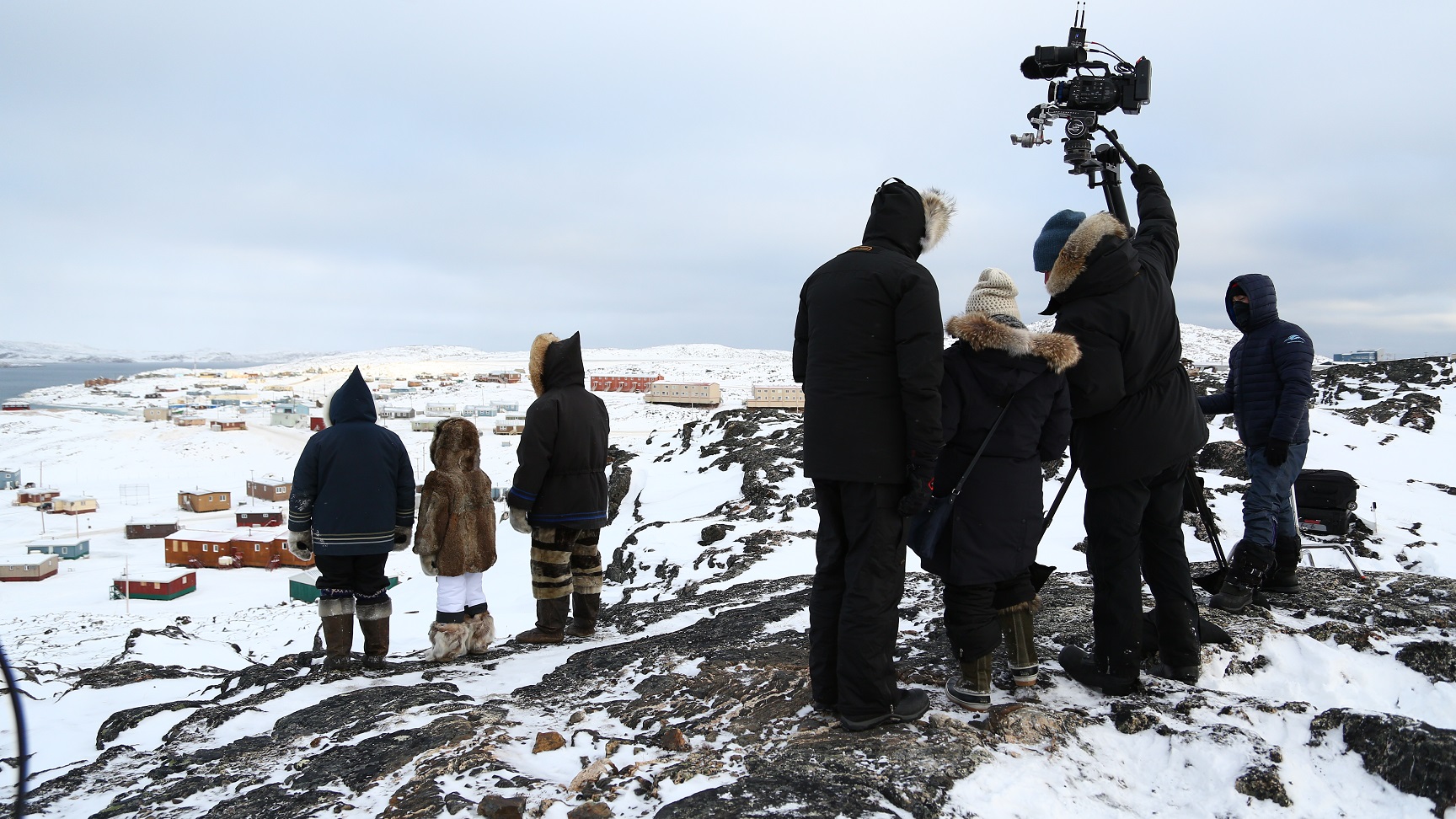Browse "Arts & Culture"
-
Article
Haskell Opera House/Opéra Haskell
Haskell Opera House/Opéra Haskell. A 400-seat theatre that has the distinction of being partly in Canada (Stanstead, formerly Rock Island, Quebec) and partly in the United States (Derby Line, Vermont).
"https://development.thecanadianencyclopedia.ca/images/tce_placeholder.jpg?v=e9dca980c9bdb3aa11e832e7ea94f5d9" // resources/views/front/categories/view.blade.php
https://development.thecanadianencyclopedia.ca/images/tce_placeholder.jpg?v=e9dca980c9bdb3aa11e832e7ea94f5d9
-
Article
Her Majesty's Theatre
Her (His) Majesty's Theatre. Montreal theatre located on Guy St and seating 1750 on a main floor and two balconies.
"https://development.thecanadianencyclopedia.ca/images/tce_placeholder.jpg?v=e9dca980c9bdb3aa11e832e7ea94f5d9" // resources/views/front/categories/view.blade.php
https://development.thecanadianencyclopedia.ca/images/tce_placeholder.jpg?v=e9dca980c9bdb3aa11e832e7ea94f5d9
-
Collection
Heritage Minutes
The Heritage Minutes collection is a bilingual series of history-focused public service announcements. Each 60-second short film depicts a significant person, event or story in Canadian history. They are produced by Historica Canada, the not-for-profit organization that also publishes this encyclopedia. First released in 1991, the Heritage Minutes have been shown on television, in cinemas and online. They have become a recognizable part of Canadian culture. The collection currently includes 100 episodes.
"https://d2ttikhf7xbzbs.cloudfront.net/media/media/1bfa3d45-2952-4f79-b7d4-4c6cb6601164.jpg" // resources/views/front/categories/view.blade.php
https://d2ttikhf7xbzbs.cloudfront.net/media/media/1bfa3d45-2952-4f79-b7d4-4c6cb6601164.jpg
-
Article
Jazz City
Jazz City (formally, Jazz City International Jazz Festival 1980-90, du Maurier Ltd Jazz City, as of 1991). It was established by the Edmonton Jazz Society in 1980 under the direction of Marc Vasey in response to an initiative from Alberta Culture on the occasion of the province's 75th anniversary.
"https://development.thecanadianencyclopedia.ca/images/tce_placeholder.jpg?v=e9dca980c9bdb3aa11e832e7ea94f5d9" // resources/views/front/categories/view.blade.php
https://development.thecanadianencyclopedia.ca/images/tce_placeholder.jpg?v=e9dca980c9bdb3aa11e832e7ea94f5d9
-
Article
Music in Joliette
City situated 75 kilometres to the north-east of Montreal, incorporated on 18 October 1863. In 1991, Joliette had a population of about 31,000 inhabitants.
"https://development.thecanadianencyclopedia.ca/images/tce_placeholder.jpg?v=e9dca980c9bdb3aa11e832e7ea94f5d9" // resources/views/front/categories/view.blade.php
https://development.thecanadianencyclopedia.ca/images/tce_placeholder.jpg?v=e9dca980c9bdb3aa11e832e7ea94f5d9
-
Article
Kensington Market
Kensington Market is an open-air food and clothing market in downtown Toronto. This multicultural marketplace is known for its independent spirit, colourful shop fronts, vibrant murals, charismatic locals and people-friendly Pedestrian Sundays events. The eclectic businesses located here sell fresh produce, cheese, meats, bread and desserts, bulk spices, nuts, flowers, marijuana and vintage clothing. The area also teems with a variety of restaurants, cafés and bars. The shops in Kensington Market spill out onto the sidewalk, giving the area a vibrant street culture unique to the city of Toronto. It is bordered by Spadina Avenue in the east, Bathurst Street in the west, Dundas Street in the south and College Street in the north.
"https://d2ttikhf7xbzbs.cloudfront.net/TCEImages/4ad543ac-841f-46aa-9c58-1dd27027f689.png" // resources/views/front/categories/view.blade.php
https://d2ttikhf7xbzbs.cloudfront.net/TCEImages/4ad543ac-841f-46aa-9c58-1dd27027f689.png
-
Article
Music in Kingston
City at the eastern end of Lake Ontario, founded by Frontenac as Fort Cataraqui in 1673 and later renamed Fort Frontenac. It was captured by the British in 1758 and named Kingston in 1783 by Loyalists fleeing from New York.
"https://development.thecanadianencyclopedia.ca/images/tce_placeholder.jpg?v=e9dca980c9bdb3aa11e832e7ea94f5d9" // resources/views/front/categories/view.blade.php
https://development.thecanadianencyclopedia.ca/images/tce_placeholder.jpg?v=e9dca980c9bdb3aa11e832e7ea94f5d9
-
Article
Music in Kitchener-Waterloo
Twin cities in southwestern Ontario. In both, a significant proportion of the population has always been of German and Mennonite stock. Kitchener, the larger of the two cities, was called Ebytown until 1824 and Berlin until 1916.
"https://development.thecanadianencyclopedia.ca/images/tce_placeholder.jpg?v=e9dca980c9bdb3aa11e832e7ea94f5d9" // resources/views/front/categories/view.blade.php
https://development.thecanadianencyclopedia.ca/images/tce_placeholder.jpg?v=e9dca980c9bdb3aa11e832e7ea94f5d9
-
Article
Ksan
Ksan (or ‘Ksan) is a historical village, museum and campground, owned and operated by the Gitanmaax Band. It is located at the junction of the Skeena and Bulkley rivers in Hazelton, British Columbia. Ksan was established in 1970 as way to promote and preserve Gitxsan culture and history.
"https://d2ttikhf7xbzbs.cloudfront.net/media/media/2fd73ae3-5ed7-4894-b6ae-caa2ac25e639.jpg" // resources/views/front/categories/view.blade.php
https://d2ttikhf7xbzbs.cloudfront.net/media/media/2fd73ae3-5ed7-4894-b6ae-caa2ac25e639.jpg
-
Article
Music in Laval
City to the north of Montreal bounded by l'île Jésus. Until 1854 the tilling of the soil was done within the framework of the seigneurial system.
"https://development.thecanadianencyclopedia.ca/images/tce_placeholder.jpg?v=e9dca980c9bdb3aa11e832e7ea94f5d9" // resources/views/front/categories/view.blade.php
https://development.thecanadianencyclopedia.ca/images/tce_placeholder.jpg?v=e9dca980c9bdb3aa11e832e7ea94f5d9
-
Article
Music at Laval University
Oldest French-language university in North America. It was founded 8 Dec 1852 by virtue of a charter signed by Queen Victoria granting the Séminaire de Québec 'the rights and privileges of a university'.
"https://development.thecanadianencyclopedia.ca/images/tce_placeholder.jpg?v=e9dca980c9bdb3aa11e832e7ea94f5d9" // resources/views/front/categories/view.blade.php
https://development.thecanadianencyclopedia.ca/images/tce_placeholder.jpg?v=e9dca980c9bdb3aa11e832e7ea94f5d9
-
Article
Music in Lethbridge
Alberta's third largest city, settled about 1870 and incorporated as a town in 1891 and as a city in 1906. It was named after William Lethbridge (1824-1901), first president of North Western Coal and Navigation Co.
"https://development.thecanadianencyclopedia.ca/images/tce_placeholder.jpg?v=e9dca980c9bdb3aa11e832e7ea94f5d9" // resources/views/front/categories/view.blade.php
https://development.thecanadianencyclopedia.ca/images/tce_placeholder.jpg?v=e9dca980c9bdb3aa11e832e7ea94f5d9
-
Article
Little Burgundy and Montreal's Black English-Speaking Community
Little Burgundy is a neighbourhood in the southwest borough of Montreal, Quebec. It is the historical home of the city’s Black English-speaking, working-class community (see also Black Canadians). Montreal's early Black settlement was comprised mainly of African Americans who lived in the Faubourg (French for "suburb") of St. Antoine — a neighbourhood that is now known as Little Burgundy. The settlement dates to the emergence of the railway companies in the mid- to late 19th century and the era of the Black sleeping car porters.
"https://d2ttikhf7xbzbs.cloudfront.net/media/Twitter_Cards/Rockhead's Paradise.png" // resources/views/front/categories/view.blade.php
https://d2ttikhf7xbzbs.cloudfront.net/media/Twitter_Cards/Rockhead's Paradise.png
-
Article
Music in London
Ontario city situated halfway between Toronto and Windsor on the Thames River. It was laid out in 1826, incorporated as a town in 1846 (population 3500), and as a city in 1855.
"https://development.thecanadianencyclopedia.ca/images/tce_placeholder.jpg?v=e9dca980c9bdb3aa11e832e7ea94f5d9" // resources/views/front/categories/view.blade.php
https://development.thecanadianencyclopedia.ca/images/tce_placeholder.jpg?v=e9dca980c9bdb3aa11e832e7ea94f5d9
-
Article
Music in Lunenburg
Seaport community founded in 1753 on the south shore of Nova Scotia by German, Swiss, Huguenot, and British settlers at a site known previously as Malagash. In 1986 its population was 2972.
"https://development.thecanadianencyclopedia.ca/images/tce_placeholder.jpg?v=e9dca980c9bdb3aa11e832e7ea94f5d9" // resources/views/front/categories/view.blade.php
https://development.thecanadianencyclopedia.ca/images/tce_placeholder.jpg?v=e9dca980c9bdb3aa11e832e7ea94f5d9
